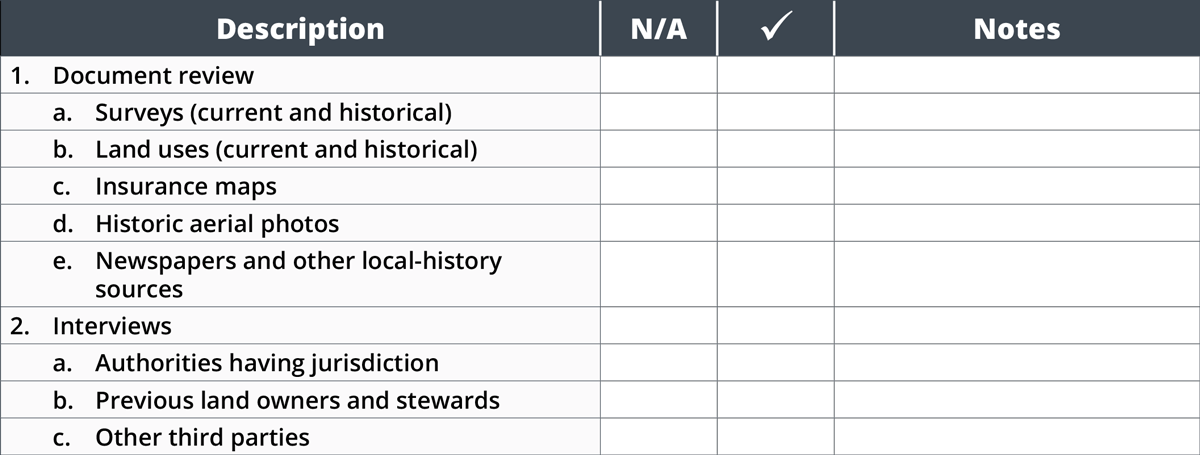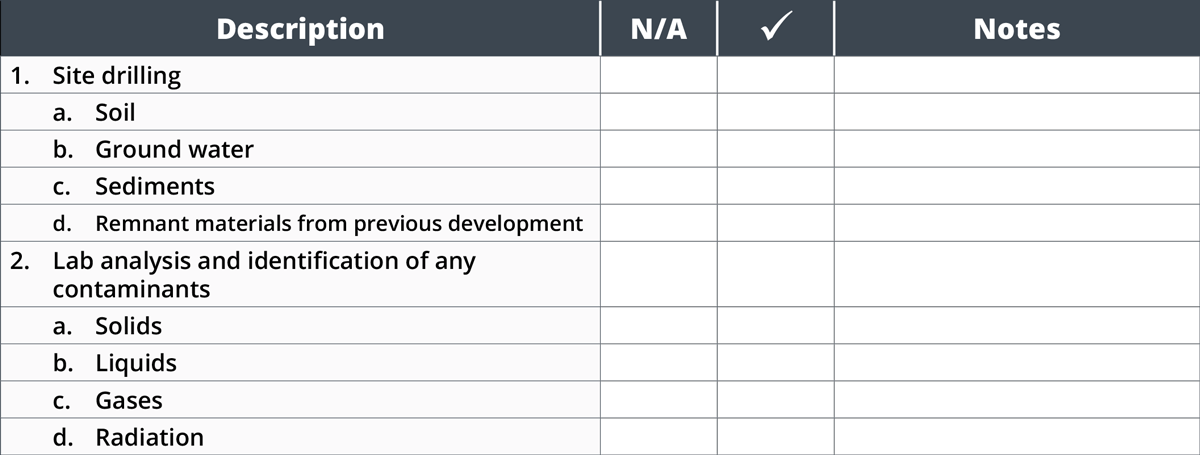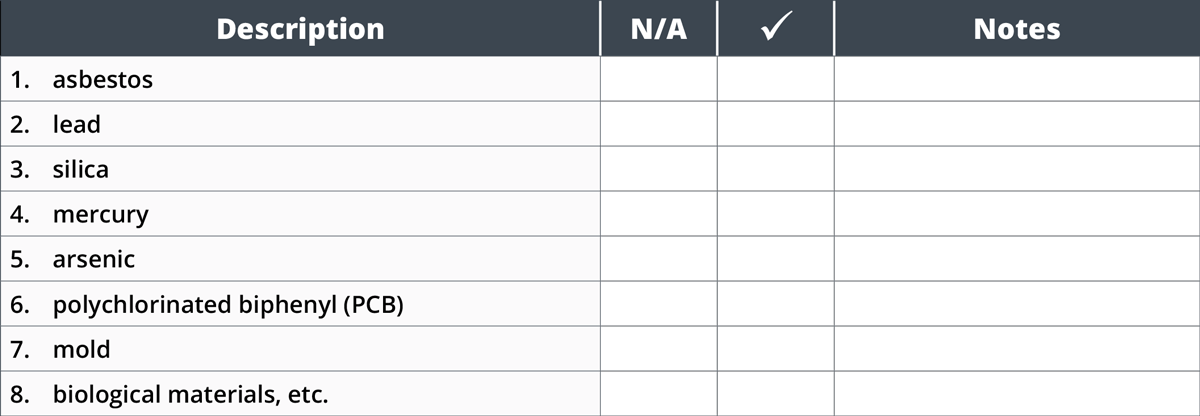This checklist is meant to assist the architect in providing guidance to an environmental consultant to prepare an environmental site assessment (ESA). There are generally three levels (or phases) of ESA that may be required for any circumstance, and they are normally performed in sequence from Phase 1 to Phase 3, with the results of each dictating the need to proceed to the next phase, or not. Particular requirements for an ESA may vary by province and by jurisdiction.
Phase 1 ESA
A Phase 1 ESA normally involves a “desk-top” review of available documentation on the site and its surroundings, and it may also involve interviews with relevant parties. The purpose of a Phase 1 ESA is to identify if on-site analysis is warranted, but it does not necessarily guarantee the total absence of contamination and risk.
Phase 2 ESA
Based on any concerns raised in a Phase 1 ESA, a Phase 2 ESA may be required to confirm the possibility of contamination. A Phase 2 ESA requires on-site investigations and lab analysis of samples taken from site.
Phase 3 ESA
Based on any positive results of the Phase 2 ESA, a Phase 3 ESA will detail the confirmed site contaminants, and outline a plan for remediating them, including:
A hazardous materials report identifies the presence of harmful products within an existing building that is expected to be renovated or demolished. Lists of hazardous materials are included in federal, provincial and territorial regulations. The most commonly found hazardous materials in buildings include:




